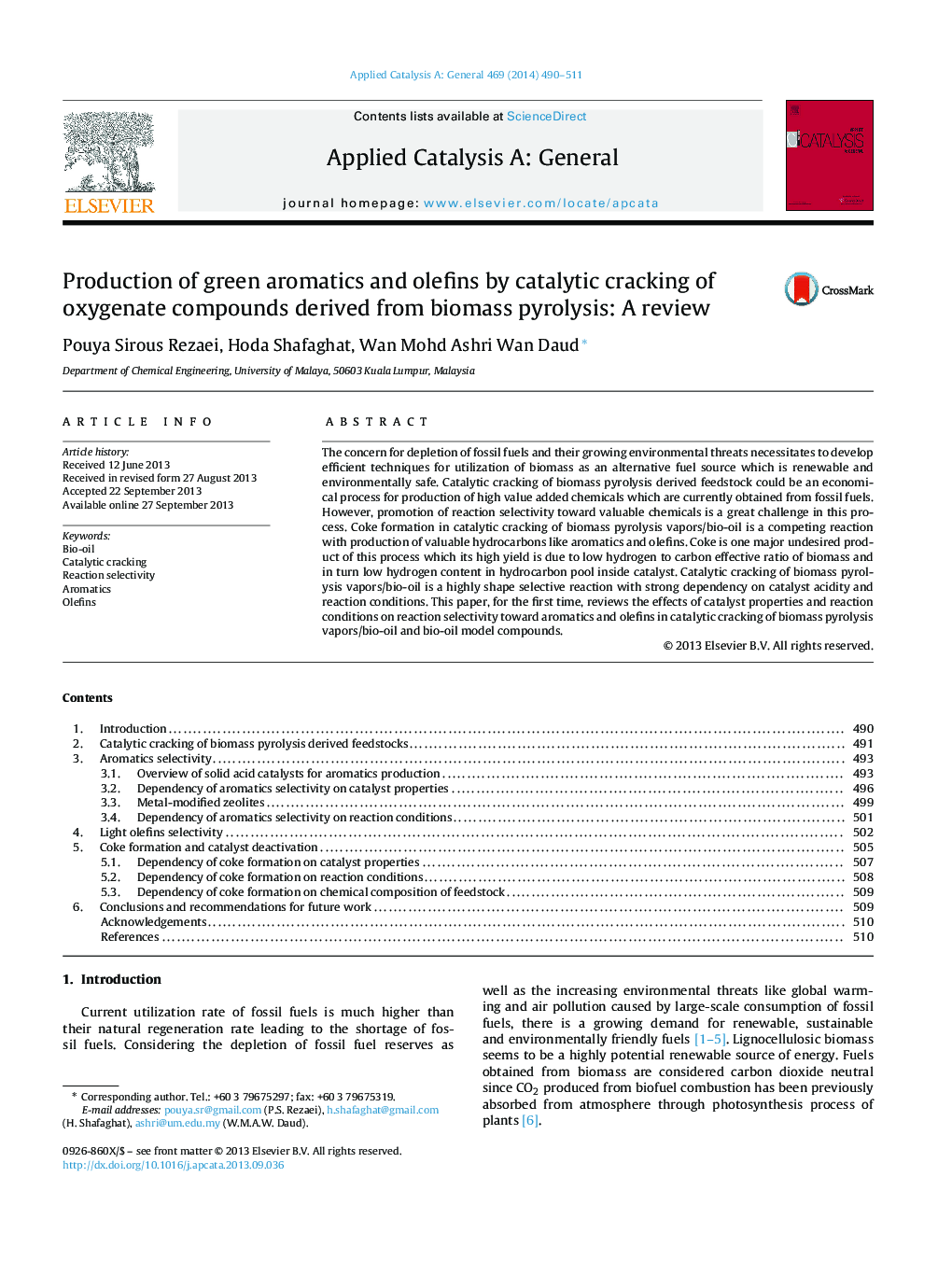| کد مقاله | کد نشریه | سال انتشار | مقاله انگلیسی | نسخه تمام متن |
|---|---|---|---|---|
| 40202 | 45845 | 2014 | 22 صفحه PDF | دانلود رایگان |
• First review of catalytic cracking of biomass oxygenates to aromatics and olefins.
• Review of applied solid acid catalysts.
• Coke formation is competing reaction with production of aromatics and olefins.
• Production of aromatics and olefins is a shape selective reaction.
• Reaction selectivity is a function of catalyst properties and reaction conditions.
The concern for depletion of fossil fuels and their growing environmental threats necessitates to develop efficient techniques for utilization of biomass as an alternative fuel source which is renewable and environmentally safe. Catalytic cracking of biomass pyrolysis derived feedstock could be an economical process for production of high value added chemicals which are currently obtained from fossil fuels. However, promotion of reaction selectivity toward valuable chemicals is a great challenge in this process. Coke formation in catalytic cracking of biomass pyrolysis vapors/bio-oil is a competing reaction with production of valuable hydrocarbons like aromatics and olefins. Coke is one major undesired product of this process which its high yield is due to low hydrogen to carbon effective ratio of biomass and in turn low hydrogen content in hydrocarbon pool inside catalyst. Catalytic cracking of biomass pyrolysis vapors/bio-oil is a highly shape selective reaction with strong dependency on catalyst acidity and reaction conditions. This paper, for the first time, reviews the effects of catalyst properties and reaction conditions on reaction selectivity toward aromatics and olefins in catalytic cracking of biomass pyrolysis vapors/bio-oil and bio-oil model compounds.
Reaction selectivity toward aromatics and olefins is a strong function of catalyst properties and reaction conditions in catalytic cracking of biomass pyrolysis derived feedstock.Figure optionsDownload high-quality image (196 K)Download as PowerPoint slide
Journal: Applied Catalysis A: General - Volume 469, 17 January 2014, Pages 490–511
